|
Friday, April 29, 2016
A Word From the Weiss  Way back
when, when Israel was in Egypt land, the thing that finally did old Pharaoh in was the
slaying of the first-born. Last week,
I was beset by my own personal set of plagues. No locusts, frogs, or blood, thank the Lord, but an actual, honest-to-G-d, full-fledged flood… plus the thing that nearly did
me in. The playing of the first-born. Yet by
some new Passover miracle, I lived to tell about
it. So believe me, I’m not kvetching. With no fixed date on the Western calendar, Passover, like most Jewish holidays, is what you might call a moveable feast. The seder meal, however, with its countless incomparably
messy courses, is not. Not easy to move, I mean. So when I agreed to hold the second seder in my son’s apartment
– which would require schlepping all of the food and various accoutrements to NYC from Connecticut – I knew I had my work cut out for me. 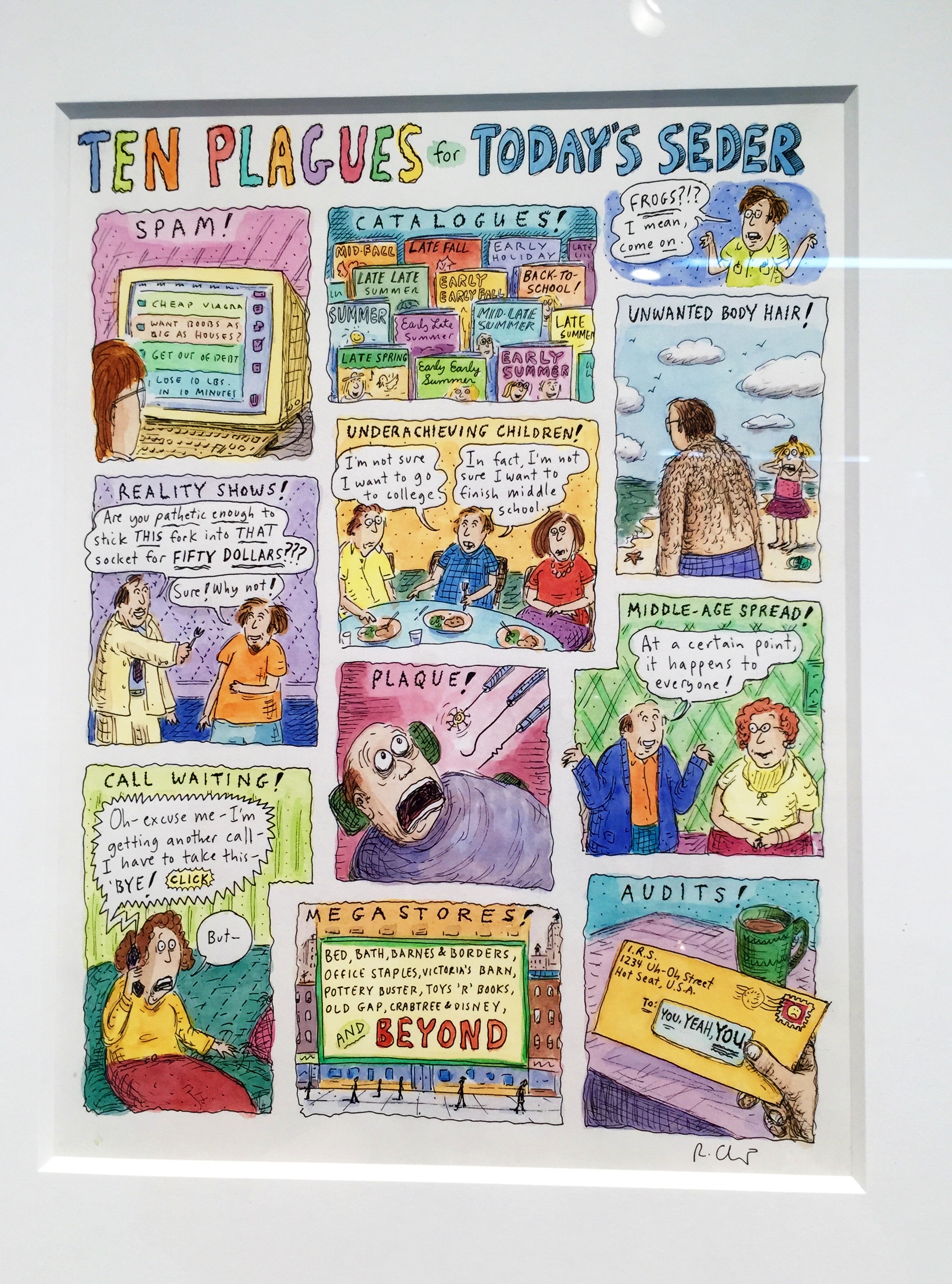 Then again, as a nice Jewish mom, I’m ready to move mountains to help my kids. So what’s a little brisket and matzo
ball soup? As I explained
last week, my son had suddenly discovered that, to his distress,
his college jazz band had chosen to hold
its annual spring concert last Saturday night.
“Who schedules a concert on Passover?” Aidan asked. “It’s not like anyone would ever consider holding one on, say, December 25th, or the
first day of Ramadan.”  Good point (the point being that who but the Jews give a
damn about the Jews and their rather unpredictable calender?). Knowing that my son’s presence at the event was
indispensable, though, I proposed the best solution
I could devise. We would hold our extended family seder at our home on Friday
night, then pack everything up, drive to New York, and hold our second seder early enough for the whole family to go to Aidan’s show. That, at least, seemed like a reasonable plan at the time. I soon realized that it would require the entire universe’s collective arsenal
of Tupperware, as well as organizational
skills sufficient to wage a third world war and/or establish peace in the Middle East.
It didn’t help that I had to travel to and from NYC twice in the few days preceding the holiday –
first to hold a bridal shower for Aidan’s fiancée, Kaitlin, then to attend my daughter Allegra’s own jazz show at the Cornelia Street Café. So I got a late
start cooking. Really late. 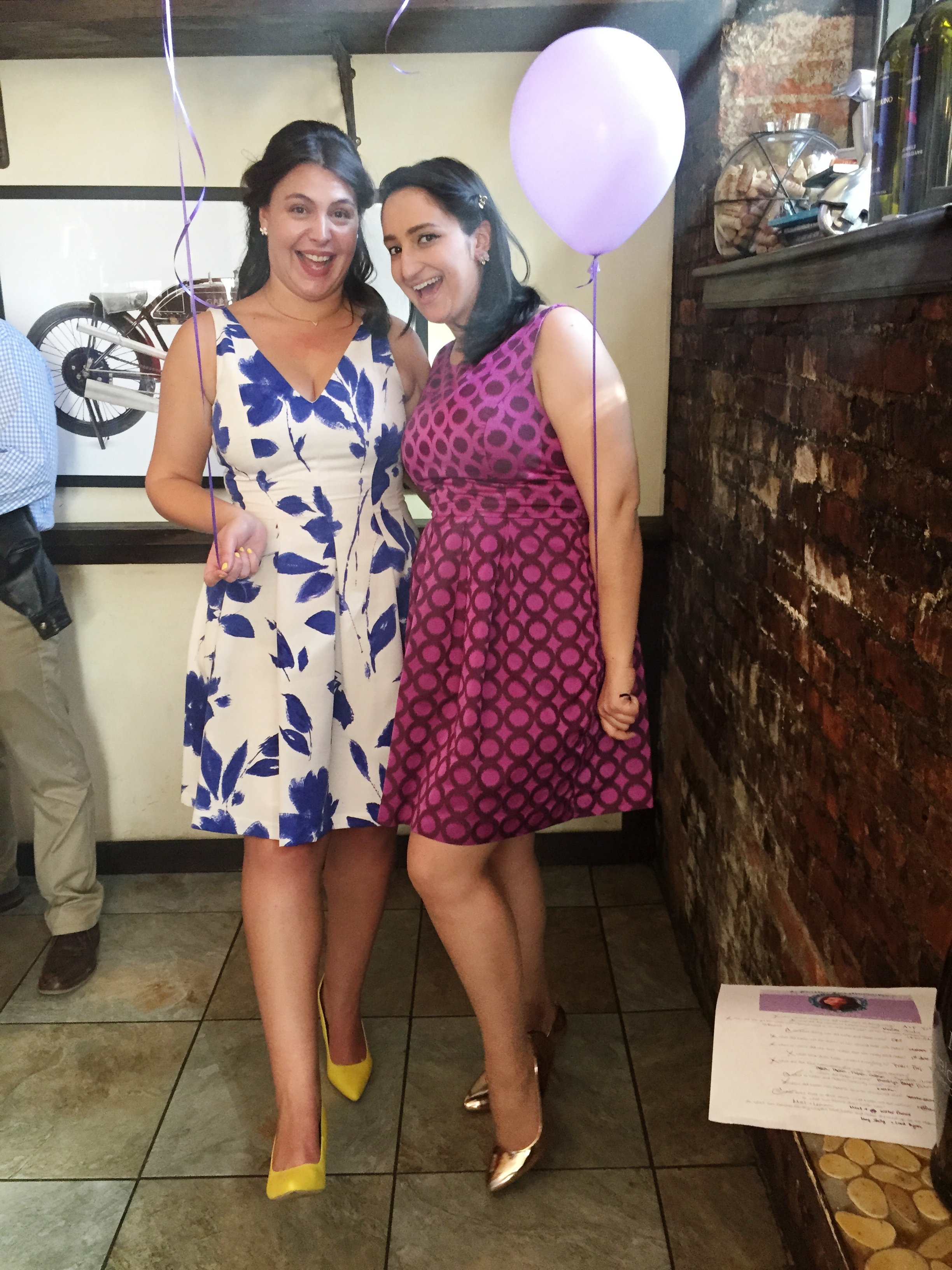 Many of my nice Jewish friends pride themselves on preparing the entire Passover meal weeks, if not months, in advance, carefully freezing everything from the coconut macaroons to the matzo balls. Not me. I not only
insist on making almost every facet of
the meal from scratch, but also on cooking it as close as possible to when it will actually be eaten. I mean no insult to my friends and other nice Jewish moms. Maybe some items, like brisket, keep perfectly well and even benefit from being aged a bit. I just don't want to get with that particular program. No
freezer burn for me, thanks! 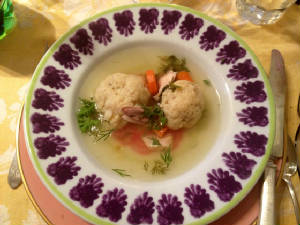 So I started simmering my chicken
soup last Wednesday night, then got up early on Thursday, and again on Friday, and kept going nonstop without so much as an occasional break
to go to the bathroom, check my email, or post photos
of my progress on Facebook. And every time I finished cooking something, I would then
have to divide it into two separate containers – one to serve on the first night, and one to schlep to NYC for the second. It didn’t help that after undercooking the brisket last year, I accidentally roasted the heck out of it this
year, so that when I went to slice it, it was so fork-tender
that it practically melted beneath the knife. Fearing that it also had managed
to shrink to half its original heffer-sized heft, I decided to make a second entrée for the second night. 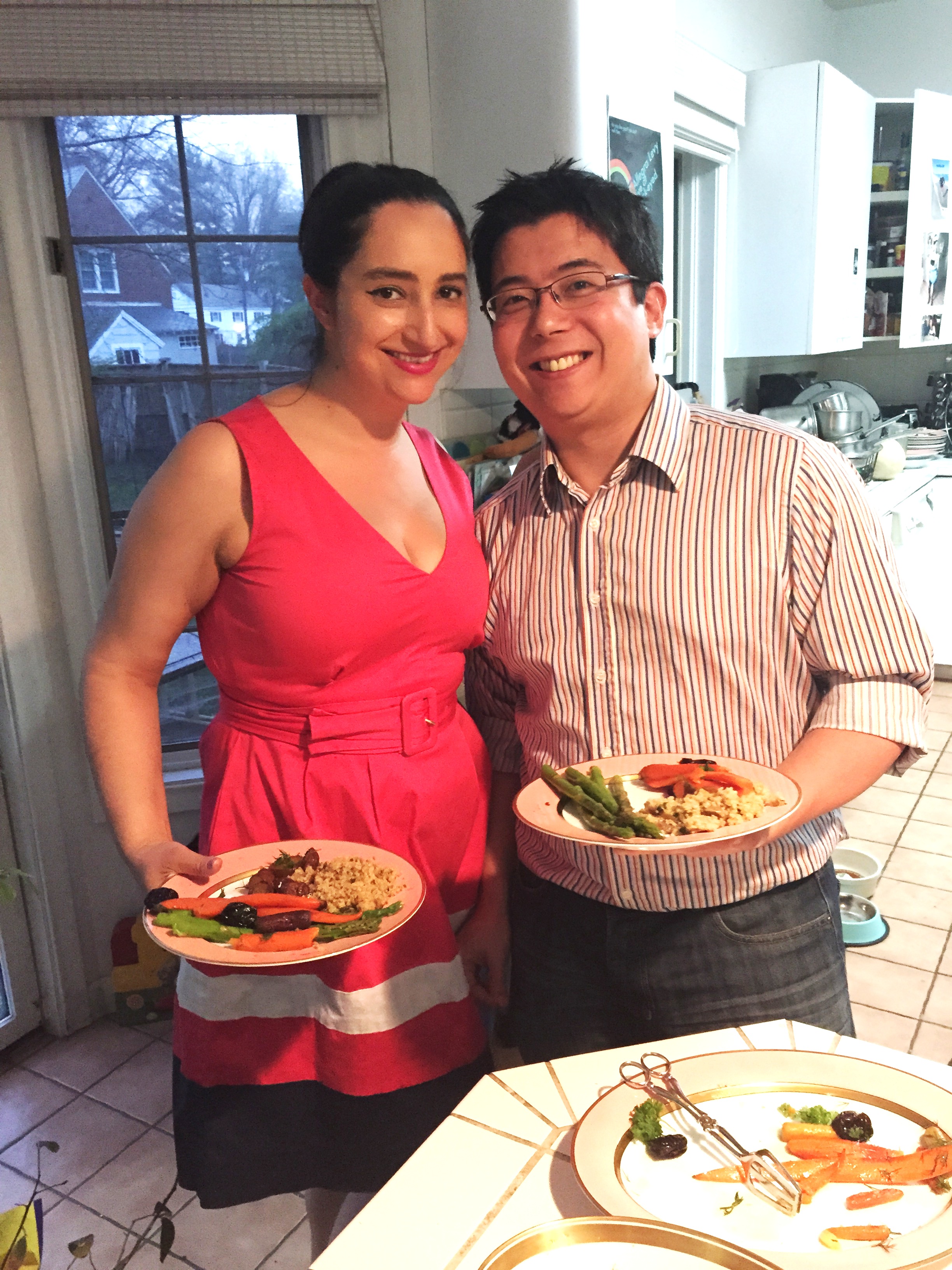 I'd happened to read in Tablet magazine that Chicken Marbella, a popular recipe from The Silver Palate Cookbook, had quickly evolved back in
1981 from an instant staple of New York dinner parties to the preferred main course
at many a Jewish family’s seder.  Somehow, in all of those decades, I had never once
made this iconic dish myself. But I wanted to do something a little beyond my usual run-of-the-mill
roast chicken. So I dispatched my daughter Allegra and her boyfriend JP to go buy all
of the necessary ingredients, including a cut-up
kosher pullet, pitted prunes, capers, green olives, white wine, brown sugar, fresh bay leaves, and plenty of dried oregano. Not until they returned from the store late Friday afternoon did I actually study the recipe and learn that the chicken needed
to marinate in the other ingredients overnight. So I would indeed be serving it freshly
prepared at our second seder. I wouldn’t be able
to put it in the oven until we reached Aidan’s apartment in NYC. 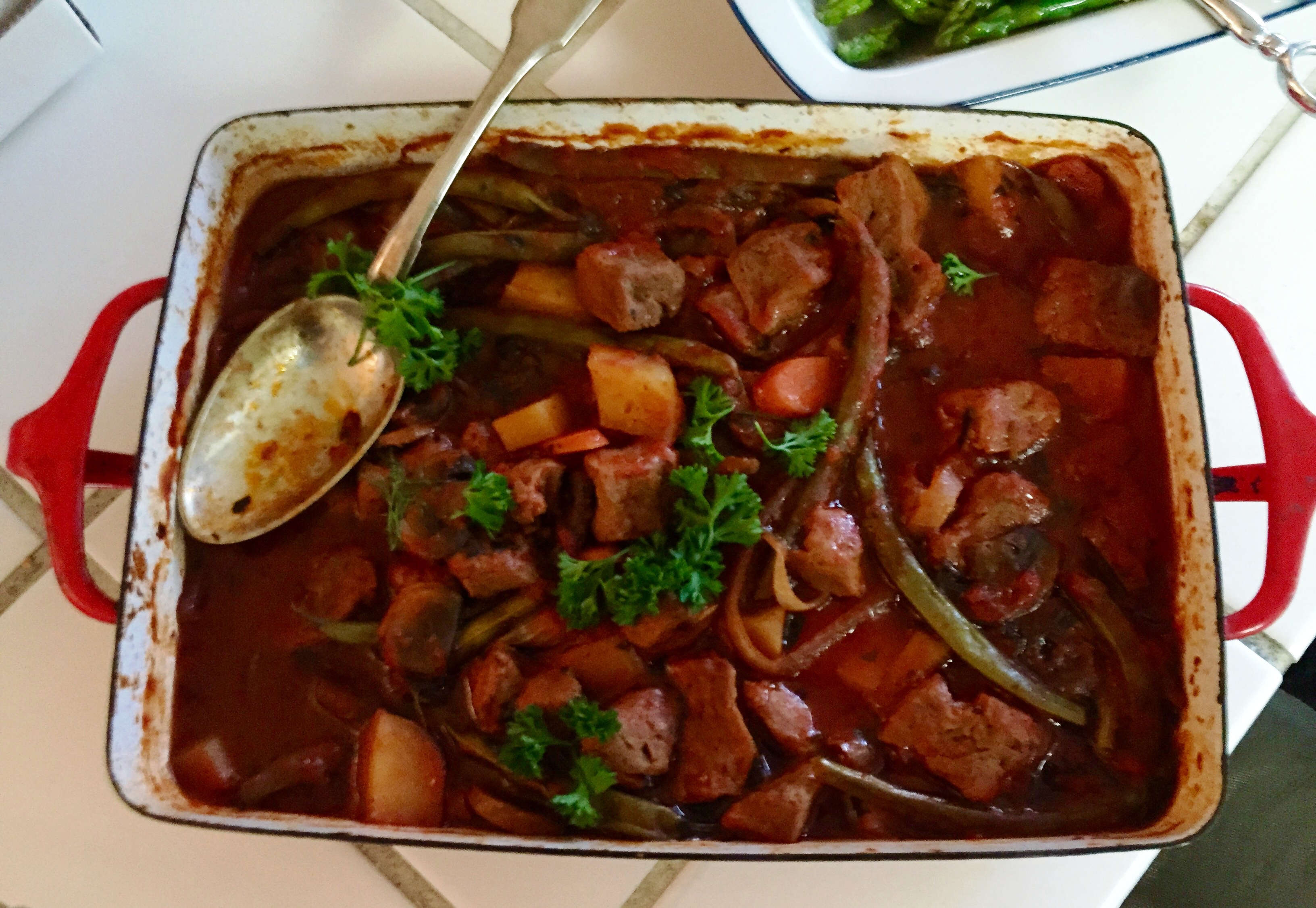 Instead, I busied myself warming up what was left of the brisket,
heating up the chicken soup, and making the carrot tsimmes, roast potatoes, quinoa with artichoke hearts, and fresh matzo balls. Meanwhile, Allegra grated the apples and nuts for the charoseth. Then I set about arranging the gefilte fish on individual
plates, as I always do, atop a colorful array of vegetable matter – including Boston lettuce, radicchio, julienned carrots,
and grape tomatoes – so that it won’t look like what it is, a slab of cold gray ground-up fish. 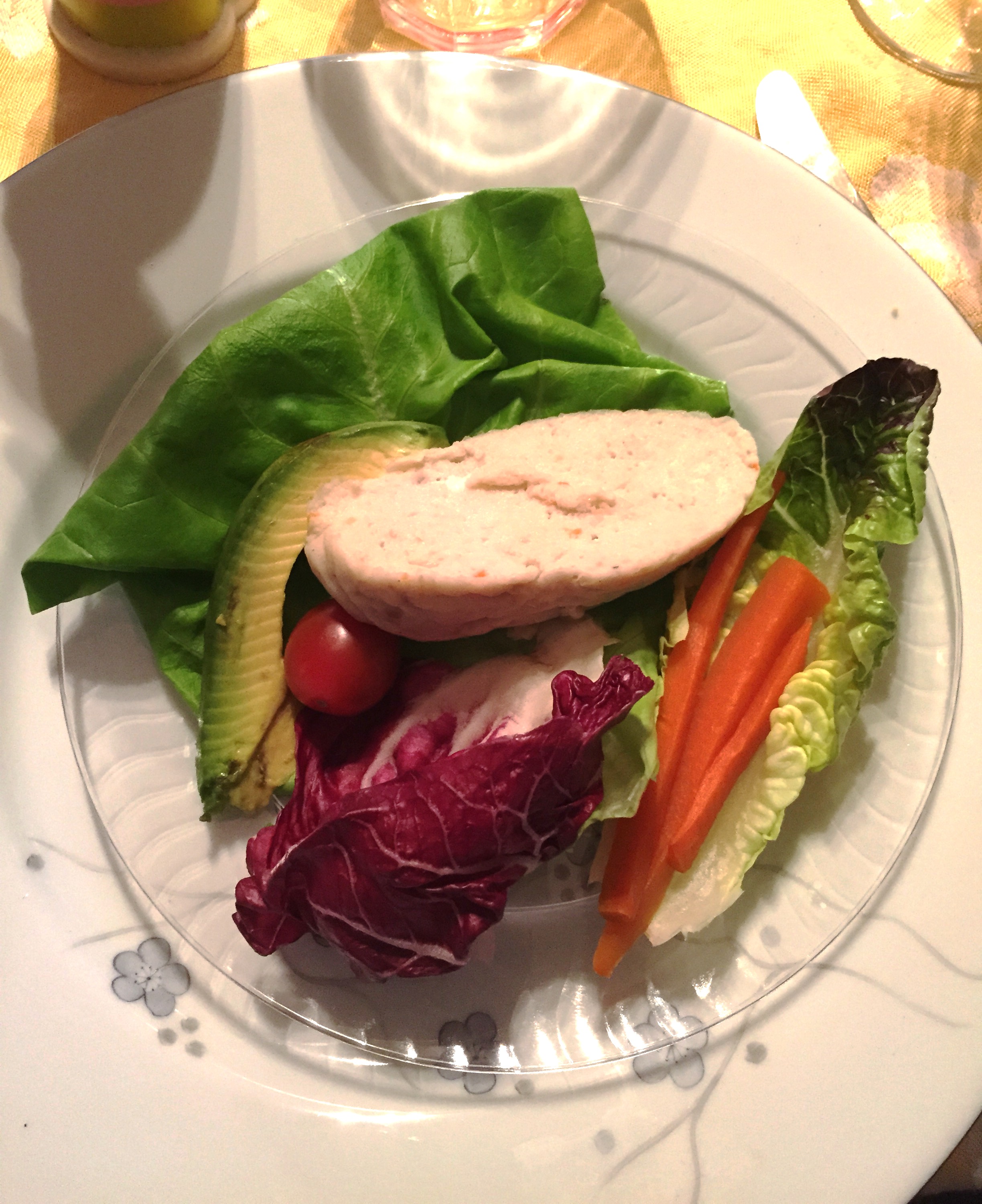 Of course, even
if it looks much more appetizing that way -- especially
after you garnish it with the requisite dollop
of beet-red horseradish – there are those in the family who still won’t eat it, including my niece (who has always shunned it on
the grounds that it is still kind of gross) and Aidan’s
fiancée, Kaitlin, who has an even better excuse. She’s a vegetarian.  For them, I assembled a small green salad with avocado instead. Not just a salad
for Kaitlin, though.
I want my future daughter-in-law to feel
completely included in all of the festivities. So I also made an alternate version of every part of the meal that would otherwise have been off limits to her. That
included a mushroom-based vegetarian chopped liver to be served alongside the traditional chopped chicken liver, homemade vegetable broth for the matzo balls, and a vegetarian
version of my brisket, made with a soy-based "tenderloin tips" meat substitute. So along with putting aside a batch of each dish that would be served the second night,
I also had to pack up an added batch of the vegetarian version of that dish. 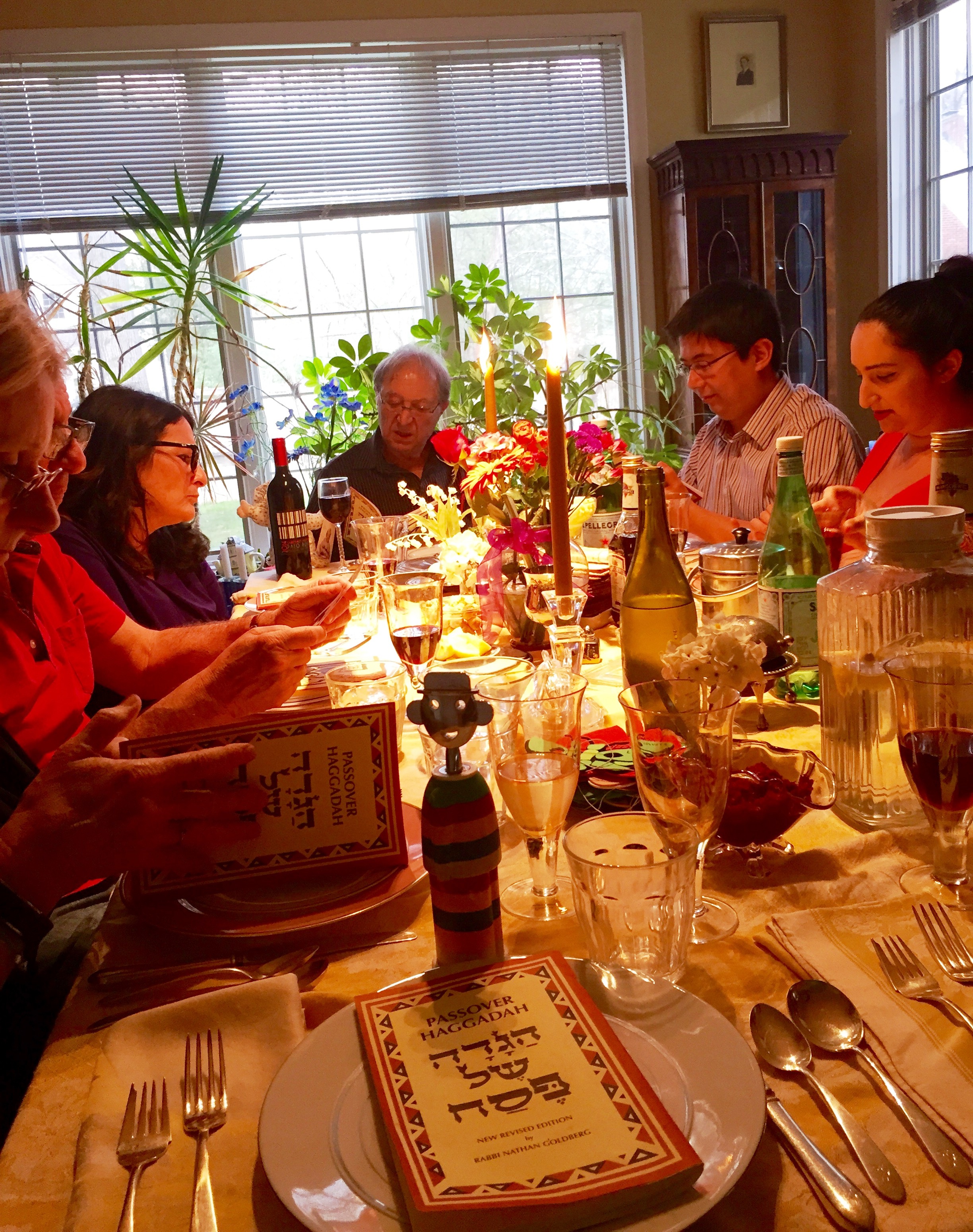 Given all that, it’s a miracle on par with the parting of the Red Sea that I managed to finish cooking and serve the meal during the current presidential administration. But somehow we eventually found ourselves sitting around
the table, reciting the Four Questions (which are really four answers), recounting the parable of the four sons, and putting on silly masks depicting everything from boils and locusts to blood, wild beasts, and the slaying of the first-born
when it was time for the 10 plagues. 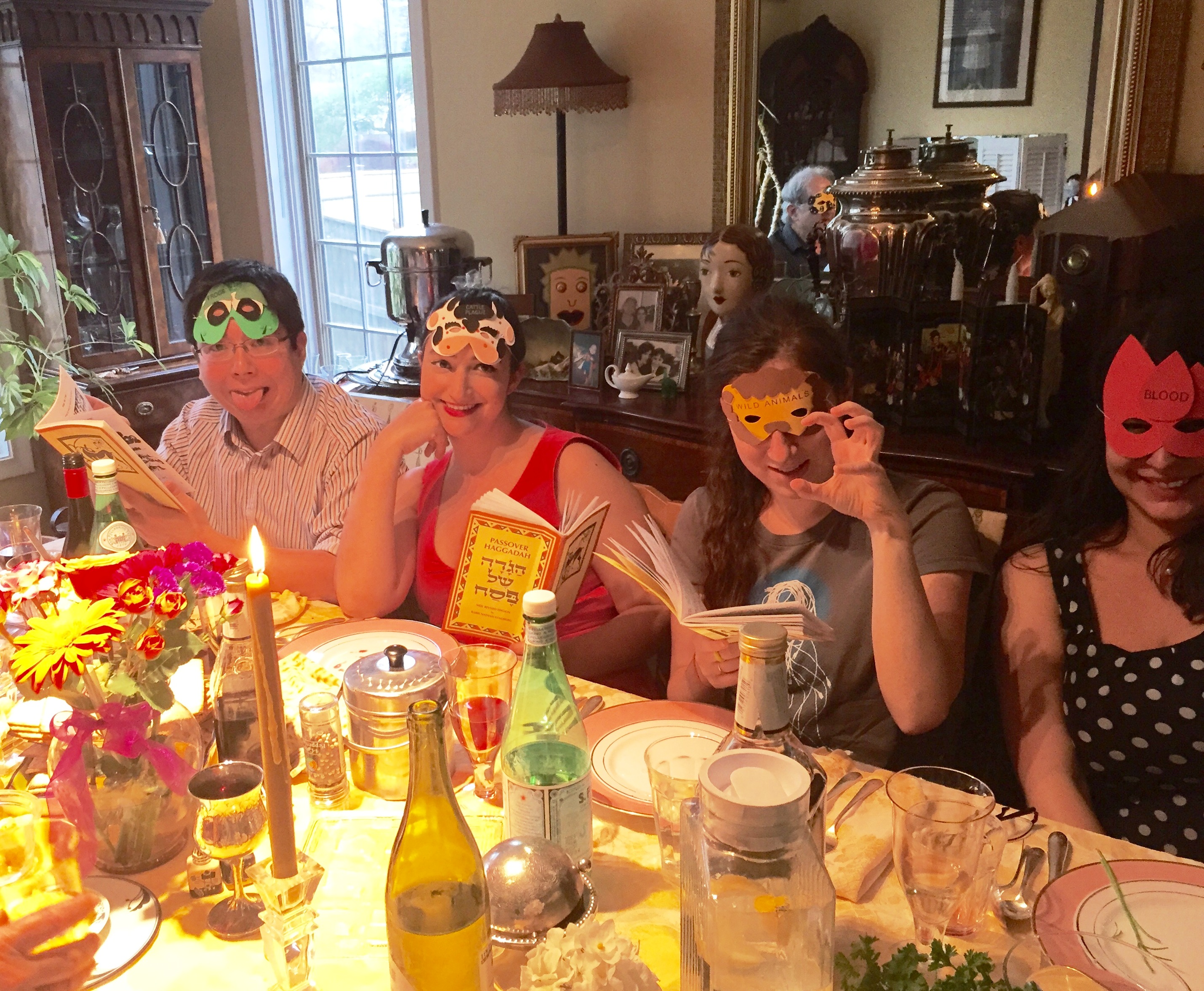 At least everyone else found themselves sitting around the table. As usual, I had to virtually inhale each part of the meal so I could leap up and start plating the next. Finally, everyone helped themselves buffet-style when the main course was served. But as I said, there are
a lot of courses to the seder meal. A lot of very messy courses. Messy to serve. And to clean up. So I had enlisted the services of
my cleaning ladies (yes, I have two), who arrived halfway through the
meal. After the chocolate-covered
macaroons and flourless Passover cake had been served, my brother happened to go
downstairs to our finished basement, where our guest room is, and soon began yelling with unmistakable urgency for me to come at once. I raced down the stairs to discover that
there was water dripping rapidly from the ceiling onto the basement carpet. A series of rivulets, like dark, bulging, spidery veins -- or maybe a band of Jews wandering through the
desert -- traced their way down a corner wall.  What the heck? Margaret
and Kasha, our cleaning ladies, had chosen to wash every single dish, pot, pan, platter, and wine glass by hand, rather
than loading them into the dishwasher. This meant that the faucet had been running
steadily for the better part of an hour. And clearly there was a leak in it somewhere because the flood in the basement was coming from
the sink directly above it.  Yikes! We phoned an emergency
plumber, but he wanted $250 just to visit. He also said that he couldnt arrive until
at least 10:30 p.m. and would probably have to open the wall. By now, everyone was in a Manischewitz stupor. We were almost ready to go to bed. This was no time
to have anyone begin opening walls. I figured if we stopped
using the sink, eventually the water would stop gushing. So I sopped up the flood as well as I could with towels. We were going away for the rest of the weekend, anyway. I’d
call a plumber on Monday. It felt like I’d barely just closed my eyes when my alarm went
off the next morning. Everyone would soon be up for breakfast. Why was this morning different
from all other mornings? Because we couldn't serve bagels; no chametz on Passover. Time to make the matzo brei! Our plan had been to leave for NYC no later than 1 p.m. But
I soon realized that I wouldn't just have to pack up all the food for the second night, along with the seder plate, assorted bottles of wine, and the Passover Hagaddahs.  Aidan and Kaitlin, being graduate students, live in
a relatively small studio apartment with a typical compact
New York City kitchen. So along with bringing all of the food, I would also need to transport
something in which to cook and/or serve each
and every item. Plus an assortment of paper plates because they don’t have a dishwasher. 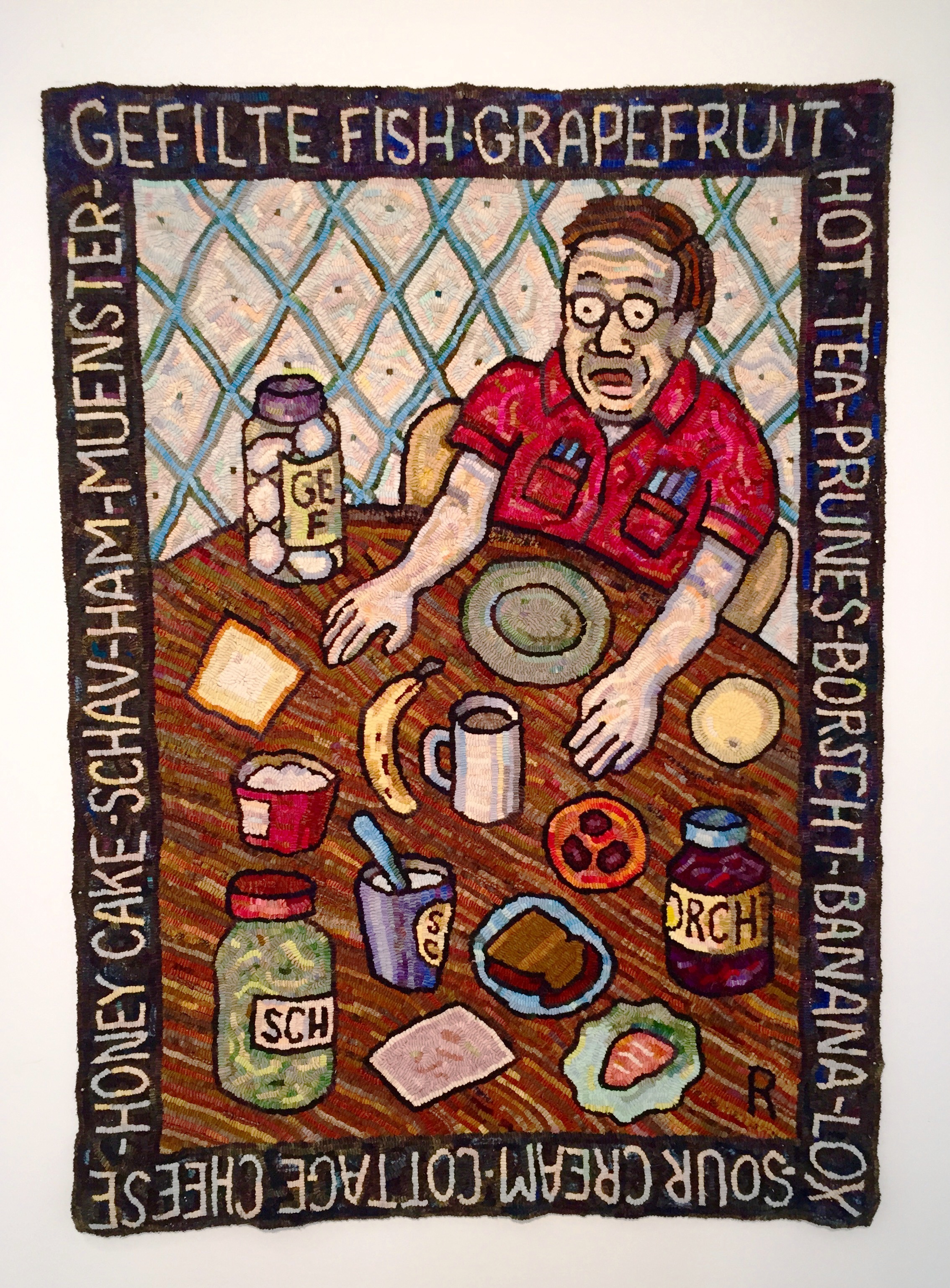 So into a series of coolers and insulated bags went the chopped liver and vegetarian chopped liver, the matzo ball
soup and vegetarian matzo ball soup, the brisket and vegetarian brisket, the gefilte fish and salad fixings, the carrot tsimmes, roast potatoes, quinoa with artichoke hearts, and steamed
asparagus, and all the fixings from the seder plate,
including fresh parsley, a hard-boiled egg, the charoseth, a shank bone, the maror (bitter herb), and a partridge in a pear tree.
And yes, a vegetarian partridge too.  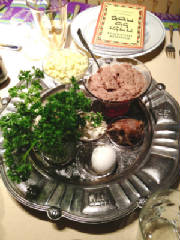 
By the time I had managed to assemble this entire arsenal,
it was already after 2 p.m. Normally,
the drive to Manhattan takes about 2½ hours, but this being a major Jewish holiday, there
was another plague – a fairly substantial Jew
jam on the Hutchinson River Parkway. The problem was that we had invited two extra guests for the second seder –
Kaitlin’s Uncle Joey, and JP’s brother Michael, who happened
to be visiting from Australia. Both were expected at 5 p.m. but we would barely have arrived
by then, let alone managed to set the table
and warm up all of the food. 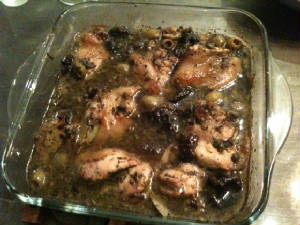 I also still hadn’t cooked the Chicken Marbella. All the way
to the city, Aidan kept asking how the heck I was ever going to serve it, since it was still
raw and marinating in its juices, carefully packed on ice. And each time I would point out that
the seder meal has many courses. Many,
many messy courses. It would take well over an hour to get through the various prayers, followed by the gefilte fish and the matzo ball soup. By that time, I was confident the chicken would be fully cooked. And if not, there was still plenty of fork-tender, albeit somewhat shredded brisket. We pulled up
to Aidan’s building at 4:45 and swiftly
carried everything upstairs on a luggage cart, which was so bogged down with bags, boxes, pots, and pans (as well as the partridge and the pear tree) that it looked like we were all moving in for a month.  While the girls set the table, I unpacked everything
hurriedly, then popped the chicken into the oven, along with all the other
items that needed to be heated. Then once again I arranged the fancy fixings on the gefilte fish plates. And miracle of miracles, shortly after our guests had
arrived, dinner No. 2 was served! 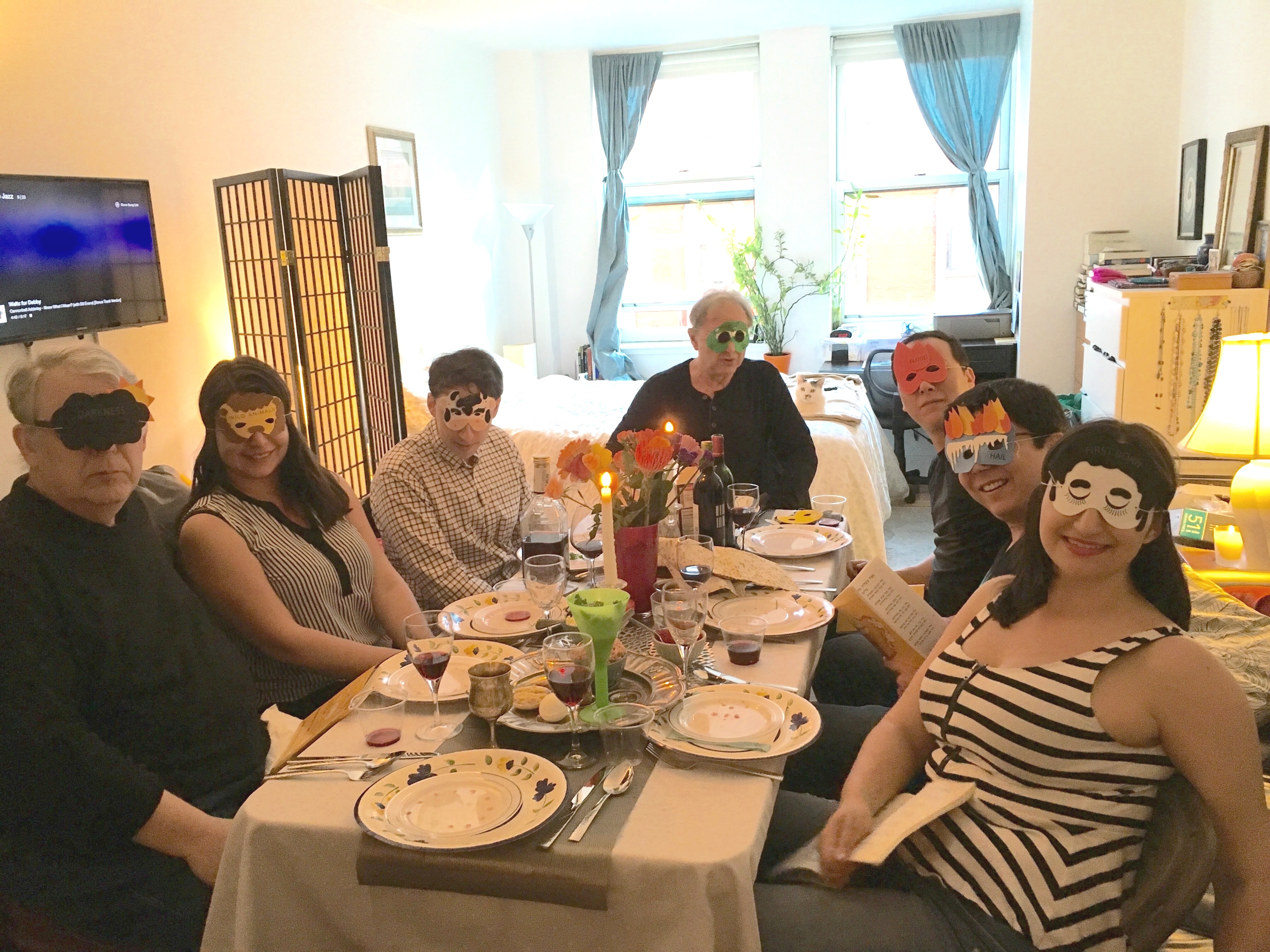 Once again, we recited the Four Questions (which are really four answers), recounted the parable of the four sons, and donned those silly masks when it was time for the 10 plagues. (Yes, I had managed to cart those along too, from the blood and boils to the hail, fire, and slaying of the partridge
in the pear tree.) And by the time we had gotten through the prayers, gefilte
fish, and matzo ball soup, the Chicken Marbella was fully cooked, as promised. Although truth be told, there was still enough brisket to feed a small country, even if it now looked more like brisket sloppy joe's, minus the rolls (no chametz on Passover!). Then we managed to polish off the chocolate-covered macaroons and Passover cake just in time to make it to Aidan’s
concert by 8 p.m. Seated there in
the dark, I could see at last why they genuinely
did need him there. There were only six in the whole group; he performed many wonderful solos on his bari sax; and
as the only graduate student among a quintet of undergrads, he was the one who introduced all the numbers and served as their
designated emcee. I was thrilled to be there and proud to be his mom. Afterwards, we went back to the apartment to clean the mess up. Even with paper plates, it took
a couple of hours to wash all of those pots, platters, and Tupperware. Then we loaded everything but the leftovers back into the car once more.  Nearly a week later, I’m still so tired
that I could swear I’ve been wandering
in the desert for 40 years. But as I said, I survived. By the way, a plumber did come on Monday morning. He unscrewed the nozzle of the faucet, extracted the teeny-weeny particle of debris that had made water spurt out the back, then told me to have a nice day. No $250 charge, at least. In fact, apparently no charge at
all. Talk about modern miracles! Still,
I’m glad Passover is almost over. I’ve had more than my share of tsuris for one year, and more than my fill of matzo. Next year, I hope we can just stay home. I really enjoy the playing of the first-born. I really do. But preferably not on Passover.
Thursday, April 21, 2016
A
Word From the Weiss  Happy Passover, everyone! In Jewish households over the next two nights, as we once again commemorate
the exodus of our once-enslaved people from ancient Egypt, the theme around seder tables everywhere will be – in the inimitable
words of Moses – “Let my people go!” But in my own house this year, there seems to have been a different continuing
refrain. “When should my people come?” It all began when my two
grown kids came home last month for the last major Jewish holiday, Purim, and I confronted them with the age-old choice: Not whether
to serve brisket or chicken at our seder, but rather, did they
prefer to come home for the first night or the second? The consensus seemed to be unanimous. “We really don’t care!” So after careful consideration, I invited everyone involved (meaning the two of
them, their significant others, my brother, his family, and my cousin Susan) for the second night. I figured this would spare my relatives, most of
whom would be coming from in and around
NYC, the double whammy of grappling with rush-hour traffic and a major Jew jam on the highway on Friday afternoon. Then I proceeded to grapple myself with
the age-old choice of what to serve -- chicken or brisket? Until I suddenly heard from my son again a couple of weeks ago.  Aidan, a Ph.D. candidate at Columbia, had suddenly realized that he was supposed to perform with his school jazz band in a spring concert this coming Saturday night. Yes, I am talking about the second night of Passover.
He had already written to various authorities requesting that the event be rescheduled. But given the number of people involved, that seemed dubious at this late date. You might think that he might simply
refrain from attending, but it was more complicated
than that. He happens to be a very key member of the band.
He had several solos in the program, and
they’d been rehearsing for months. As
a decent and deeply thoughtful guy, he was reluctant to let his band mates down. But as a Jew, he was also incensed. “Who schedules a concert on the second night of Passover?” he asked. “It’s
not like anyone would ever even consider holding
one on December 25th, or the first day of Ramadan.”  As a Jew, I was also incensed. But as his nice Jewish mom, I was sympathetic and eager to help.
As important as it is for me that we celebrate this major occasion with all due pomp and circumstance (or the customary lack thereof), not to mention copious amounts of matzo ball
soup and gefilte fish, my No. 1 priority easily trumped that. (Please excuse the reference
to the word “trump.”) I just wanted us to be together as my family.  I also will do whatever it takes to not subject my
children to avoidable duress. So after quick consideration, I came up with what I thought
was an ideal solution. We would reschedule our big family seder for Friday night. Then on Saturday morning, after a hearty
breakfast of matzoh brei, I would pack up the leftovers and head to NYC, where we
and our children would hold an early second seder at Aidan’s apartment. Then we would all go see
him perform in his concert, which did not begin until 8 p.m. This, of course,
was predicated on the prospect of my brother and his family being willing and still available to switch nights. The likelihood, I feared, was that they had already accepted
another invitation for the first night, and we'd be out of luck. My added fear was that either way, they might be annoyed at being asked to change course weeks
after we had finalized our plans. It may sound wimpy – OK, it may be wimpy – but I’m a nice Jewish mom, not a nervy one. I didn’t want to be the one to ask. But if Aidan were willing to call them, I said, and they were willing to switch, then rescheduling our big family seder was totally fine by
me. (I really didn’t care!)  To my delight, I soon heard back that, miracle of miracles,
my brother’s family were willing and able to accommodate us. So all was well again. Or so I thought.
A few days later, I happened to mention the new arrangements to our daughter. My kids have such a close relationship
that I had assumed she must know by now. But no. She didn’t know. He’d neglected to tell her. And she didn’t like the new plan one bit.  Allegra’s boyfriend JP had agreed to come all the way from Philadelphia to our home in Connecticut for Passover. There was no point in his making the 4- or 5-hour trek to be here for only one night. Besides, Allegra had made plans to see various old friends who would also be home for the holiday over the weekend. Plus, she had been looking forward to spending a rare and relaxing
weekend at home with us and Latke. Our dog. Now what? If there’s one thing
any nice Jewish mom loathes, it’s having
to choose between her children. Appearing to favor one over the other is far from nice.
Besides, my brother’s family had already agreed to change plans. Dare we ask
them to switch back again? I felt guilty. Very guilty. Never mind that we were going to a concert
on Passover. Before making new arrangements, I should have consulted all the parties
involved. Should I tell my daughter that we would stay home for the second night, after all, then send her brother and
his fiancé Kaitlin back to the city with leftovers to fend for themselves?
Or should I rule against her, and risk having JP not come, in order
to appease my son and do the only thing that would allow us to remain together
as a family? 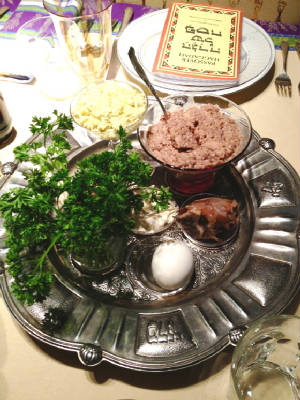 This was much more challenging than choosing between chicken and brisket. Oy! Well,
I may not have the wisdom of King Solomon,
but I’m happy to report that suddenly another unforeseen circumstance cropped up. It turned out that JP’s older brother would be visiting NYC from his home in Australia this weekend. So Allegra and JP were suddenly eager to return to the city on Saturday afternoon themselves. We will have the second seder at Aidan’s as planned, and JP’s brother will
join us! So we will indeed be all together as a family, with extra family members to spare. Yes, once
again all’s well that ends well. Well, maybe not all. Last year, I didn’t
cook my brisket quite long enough, and it was a little tough. So this year I cooked it to smithereens. Literally.
It fell apart.  I'm talking brisket hash. It also shrunk down to almost nothing. At least, despite that other popular Passover refrain ("Dayenu -- it would have
sufficed us!") what's left of it is not nearly enough to suffice us for two family seders. So I won’t
be choosing between making chicken or brisket this year, after all. Looks like I’m going to have to make them both.
Friday, April 8, 2016
A Word From the Weiss  April 5. My mother’s yahrzeit. I simply can’t believe it's
been seven years already. She was
a force of nature (human nature). A determined and indefatigable spirit who
never, ever, EVER gave up. Was so smart and SO brilliant (even if
she did feel inclined to say so herself). Also svelte enough to be “exquisite and shapely” (ditto). Excelled
at cooking, teaching, tennis, and bridge. But most of all at
being a mother, grandmother, and character
unlike any other. I miss her still. And always will. Bernice Lichtenstein
Weiss Groves. The best of all the good ones.  When I posted photos of her on Facebook that day, after lighting a candle in her memory, several people instantly
remarked on the uncanny resemblance between us. I’m still trying to decide if that’s
a compliment or not. I loved you, Mom. I always will. But no woman – unless you’re the daughter of, say, Amal Clooney
or Penelope Cruz – truly relishes being told that she’s the spitting image of dear old mom.
And even those who may be flattered by the suggestion of a physical resemblance may resent hearing from anyone that they are “just like your mother”
in other respects. When a close family friend
declined the invitation to my son’s wedding this week with little explanation,
I told my son that I was curious about it and
would try to subtly feel it out. “Please don’t!” he begged. “You’re not exactly known as the subtlest ‘feeler-outer.’”  “Oh, really?” I responded, mildly miffed. “Who do you think I am, Grandma Bunnie?”  “Not quite,”
he quickly assured me. My mother’s approach to feeling something out, he said, would
be akin to a stage whisper – one of those theatrical utterances that purport to be hushed and private, but are delivered
with sufficient volume and drama to easily be discerned by everyone in the room. I wasn’t quite in her league, he allowed. “You’re only Grandma Bunnie Lite.” No matter. I suppose I should be grateful that I remind anyone of
her in any way. She had so many strong qualities – best of all, her relentlessly buoyant optimism. But the truth is that we were very -- no, actually
very, very, VERY – different people.  Maybe, like her, I’m as stubborn as a mule. But I don’t have her innate need to win. Hardly. She had more
competitiveness in her pinky finger than I have in my entire body. I would also dare to say that, by comparison, I have the patience of a saint (if there were Jewish saints). I often credit her with my having grown up to be a writer. From an early age, I tended to relate almost
everything that happened to me in excruciating detail. At least it was excruciating to her. After about 45 seconds, she
would be able to endure my tale-weaving no longer and exclaim in exasperation, “Just get to the point!”  I’ve been getting to that point ever since, although
somewhat circuitously (as my regular readers might contend), still continuing to put in every darned iota of excruciating detail, and then some. But
I still haven’t managed to
get to a point she predicted I would reach years ago. Throughout the last decade of her life, she developed a strange habit of often beginning sentences to me with the unnerving phrase, “When you’re ready
to have your facelift…” Actually, that’s
about as far into that sentence as she would ever get, because I would instantly cut her off at that point, just as she had so emphatically once interrupted me. And after cutting her off,
I would explain patiently (although less patiently as
time went on) that such a day would never come.  This was not necessarily a declaration that I intended
to “grow old gracefully.” After all, let’s face it –
when I was growing up, I was a natural redhead. And I remain a natural redhead to this day… only now I do it with a little
less nature and a lot more help from
Luis, my faithful hairstylist for more than 20 years.
Also, far be it from me to step out of my house without some amount of makeup, even if only to run outside
in my PJ’s early in the morning to let the
dog go pee.  But there are only certain lengths I’m willing to go to in order to maintain some semblance, or at least
illusion, of youth. That is in part because I shun
unnecessary pain, and in part because I prefer to be myself (albeit with a touch of makeup). And also because I know what a facelift
entails because I went to the rescue when she had hers. I still remember what that was like (in literally excruciating detail), even though it took place some 16 years ago, during the summer of 2000, when my mother was 72. Interestingly enough, this happened to be only about six weeks after her second husband, my stepfather Sid, had abruptly passed away just after Memorial Day. There are those
who might find it unseemly that she let so little time
pass before undergoing a procedure that would make her look more appealing to
prospective new suitors. But the truth is that her surgery wasn’t really about finding another husband at all. 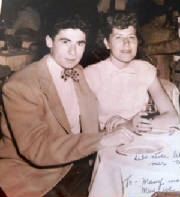 As I said, my mother had an indefatigable spirit. Throughout her nearly 30-year marriage to my father, who was relentlessly unfaithful to her, she maintained a
certainty that he’d eventually “settle down” and become the devoted husband she had always wanted. After their marriage finally fell apart because that fairy-tale
ending was never going to be more than
a myth, she remained upbeat... and met Sid.  And as heartbroken as she was after he died 20 years later,
a few days after the funeral she suddenly emerged from her bedroom in a black tennis outfit, which
I liked to joke was Grandma Bunnie’s version of mourning clothes. But choosing to have a full-blown facelift only six weeks later was not a sign that she was already ready to move on again. On the contrary, she drove around for the rest of her life with a photo of Sid perched beside her on the passenger seat of her Toyota Camry, lamenting regularly to all who’d listen that she would never find another man like him. 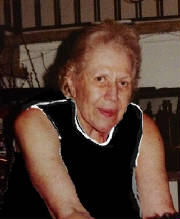 We could only hope that this was true. For despite
his kindness, decency, and the grandfatherly devotion
he showed to my children, although they were not
biologically his, he was a chronically crotchety fellow given to cracking unbearably corny jokes. “Why do people always pronounce the name Monroe ‘mahn ROW?’” he would repeatedly inquire. “You don’t
say, ‘Give me some MAH-nee, HAH-nee!’” 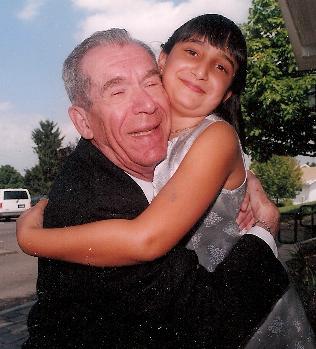 There was a totally different reason that she rushed into that facelift. She had been saving up for it for years
from her modest teacher’s salary, and had long since managed to amass more than enough “MAH-nee”
to cover it. Yet Sid had staunchly opposed her having
cosmetic surgery of any kind. Now he was no longer standing in her way. So she figured, why wait?  After the procedure (which was much more arduous than she’d been told to anticipate) and the recovery (which was also much longer than she’d been told to anticipate) she was, to be honest, beyond thrilled with the results. Not only did she consider herself to be once
again “exquisite and shapely,” as she liked to say. She felt like a new woman.
Yet I was the one obliged to nurse her through all of the above. And afterwards I still felt that no matter how old I might ever grow
to be, remaining essentially au natural (albeit
with a touch of makeup) was the right thing for me and a matter of personal integrity. But that is not to say I’m not vain
about my looks. Nor did it prevent me from having a rather humbling and humiliating experience recently when we were down in Miami.  My husband and I were lolling on
the beach one afternoon when he told me that he wasn’t feeling well and
was going back to our room to rest. I promised to follow shortly.
On my way back, I was approached
by a very attractive young woman offering free samples of face cream outside of the posh skin salon across the street from our hotel. How attractive was
she? Imagine a younger, Jewish cross between Amal Clooney and Penelope Cruz.  When I asked her what those samples were, she beckoned me to follow her inside.  I should have known better with a girl like her. After all, I had been down this road before. Only the year before, a buff-looking young fellow had lured me into a similar salon and applied a cream supposedly infused with diamonds, guaranteed to take years off my appearance.
Diamonds or not, the stuff did make my skin plump up a bit, temporarily masking some of the wrinkles (yes, Mom, I have my share by now). But it tingled so much, and it cost so much – well
into the hundreds – that I regretted succumbing to his aggressive sales pitch and at my husband's behest hurriedly left.  Had my husband been with me now, he would have
rebuffed the young woman’s overtures, no matter
how attractive she was (very) and led me firmly away. But he was back in our hotel, and I was in no hurry to return on this beautiful day. So I followed her in and let her slather something thick, white, and creamy over half of my face (only half for comparison's sake). The product she was promoting turned out to not be just this single elixir, but an entire skin-care regimen from a company
called Premier. This rarified line, made in Israel, came
from the Dead Sea (where else?), and altogether cost something like $1,200 or $1,800. I can’t remember which one it actually was, but what
difference does it make? Both figures were so far outside of the realm of possibility
to me that I laughed and wanted to leave. I couldn’t
leave, though, until she had removed the thick and creamy stuff from my face. And as long as it was on, she wanted me to wait
10 minutes to get the full benefit. During those 10 minutes,
she somehow managed to elicit all sorts of personal information from me, including the fact that my son was getting married
this summer. “Mazel tov!” she exclaimed, congratulating me heartily
as any fellow Jew would. But wait. Didn’t
I want to look younger and fresher for my son's wedding? Well, duh! And the truth was, for me,
it wasn’t just a matter of younger. Or fresher. Not to mention “exquisite
and shapely.”  All women have their Achille’s heel when it comes to physical appearance; that one flaw in our physique that may or may not be noticeable to others, but is so glaringly obvious to us that we’re self-conscious about it
and would do almost anything to fix or cover it up. In my case, I can’t cover it up because it’s right smack dab in the
middle of my face. I hesitate to even mention it, because after I do you will probably notice it too. If you haven’t
already, that is. I’m talking
about the vertical worry line on my forehead, right between my eyebrows.  Some people call these “No. 11” lines because they make you look as though you have
the number 11 etched on your brow. But in my case, there’s only a single crease. So I guess you might say that my No. 1 source of self-consciousness is my number
1 line. This young Israeli woman, whose name turned out to be Keren (which means
“ray of light” in Hebrew, but can also be translated as “fund”) said that the gook she had applied – Premier’s Elastin and Beta Carotene Lifting Mask, from its top product line, called Supreme
– would eradicate that unwelcome line, as well as all of the others I had. (Wait, there were others?) 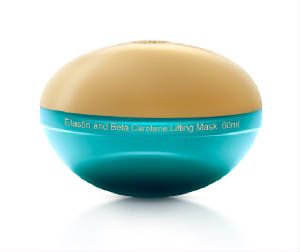 While we waited for it to work its magic on my No.
1 line, and all the others, she continued to promise
the world to me and also to vigorously hondle (Yiddish for “bargain”). I could buy only three of her products for a total of $500. Or
maybe it was $800. What difference did it make? It was still far outside the realm of possibility for me. (Wayyy too much MAH-nee, HAH-nee!)
Finally, it was time for “the big reveal,” as they say on TV makeover
shows. Keren gently wiped off the Supreme goo with
cotton balls to unveil the new and improved me. “Look how much smaller all the fine
lines under your eye are on this side!” she declared triumphantly, as I studied the results in the mirror. Yes, Mom, I guess I do have fine lines under my eyes.
Or did. Honestly, I couldn’t see much of a difference. But I didn’t want
to offend her. Especially because I still didn’t want to buy any of her products, even at the mere $400 she was now
offering. (Still far from within the realm.) But suddenly, as I was
leaving, she gave it one last-ditch effort. In honor of my son’s wedding, she wanted to give me a gift and pass her employee discount on to me. Would
I be interested in buying the one product she had put on my face for $150? Never mind that it
retailed, or so she claimed, for $400?  My husband happens to be the consumer reporter at the Journal Inquirer, a newspaper in Connecticut, so I’m fully aware that if a deal sounds too good to be true, it probably is. But I was on vacation. And my No. 1 aspiration was to look younger and fresher at my
son’s wedding, preferably
by eradicating the number 1 line on my face. So I suddenly found myself
forking over my credit card and accepting her final offer (which, according to the sales slip, was
a final sale, no exchanges or returns allowed). By the time I had crossed the street to our hotel, I was already
drowning in buyer’s remorse, enough to visibly deepen that dreaded worry line on my brow. I was also so anxious about
how my husband would regard my foolish extravagance that as I entered our room I snuck the
bag holding the cream into the closet and
kept mum about it for several days.
Several agonizing days. Until, as on Law & Order, the guilt finally overwhelmed me and I blurted out the
ugly truth. “I’ve done
a very stupid thing,” I confessed to my husband out of the blue.  Then I braced
myself for the stern and belittling lecture that I fully expected to follow. But when my husband learned that the very stupid thing I had done was merely that I’d bought something stupid, and that I hadn't gone and done something really stupid, like have an extramarital affair,
he was so relieved that all he could do was laugh.  Laugh and insist on meeting Keren, the incredibly
attractive young Penelope Cruz look-alike who had sold me this extravagant and probably useless bill of goods.  The salon turned out to be dark and deserted. I panicked briefly, then came to my senses. Of course. It
was Saturday! Being an Israeli store, it was closed for Shabbat. But the next morning, we tried again and found Keren on duty, manning her post (although "manning" is about the last term anyone would apply to her).
She seemed a little wary when my husband demanded to experience
the same procedure to which she had subjected me. 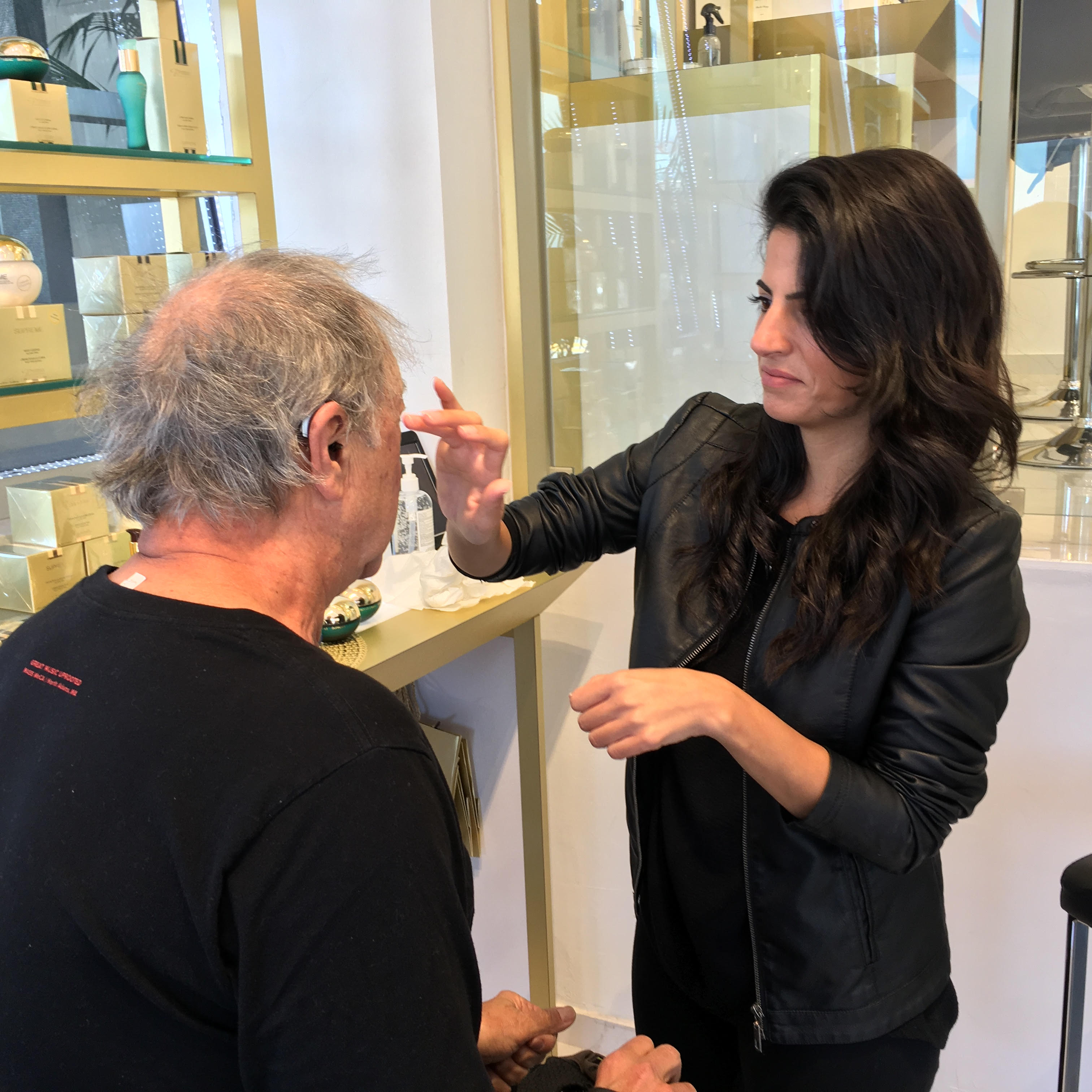 But she dutifully led us both inside and began to apply the mask.
This time, when all the gook had finally been removed and she proceeded to gush about how
dramatically his fine lines had been reduced, I was more able to
offer an objective opinion. Which was that, to be honest, I couldn’t see
any difference.  No matter. Even if there had been a difference, we weren’t going to buy any more from her. Even with her discount, it cost way too much MAH-nee, HAH-nee!
I would like to tell you that having made that silly and overpriced purchase, I’ve been using
that special elixir from Israel on my face religiously ever since. But the truth is that we’ve been home for two months now, and I have yet to even open the jar.
Every time I look at it, I feel so stupid that the number 1 line on my forehead deepens. In fact, it was beginning to get so deep that it was becoming the number 11.  Instead, I took to making another and far less extravagant (pardon the expression) Hail Mary pass. Every night, before I go to bed, I put a little piece of clear surgical tape over the line between my eyebrows.  Years ago, I tried an old-fashioned product called “Frownies,”
which consist of gummed brown paper triangles that
you stick onto your furrowed brow overnight, making it look less furrowed. They didn’t work for
me. But I think the tape kind of does.  At least every morning when I remove it, the No. 1 line has virtually disappeared! And although
it may slowly reemerge as the day progresses, I see gradual progress. And I remain optimistic that by my son's wedding in June, it will be barely visible at all. 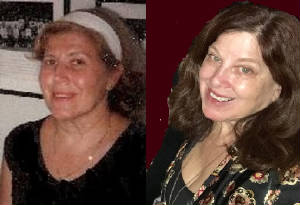 And even if it still is visible, I know I’ll be too busy having the time of my life
to care. For I may not be ready for my facelift, now or ever, but at the end of the day, as they say, I am still very much
my mother’s daughter.
Friday, April 1, 2016
A Word From the Weiss 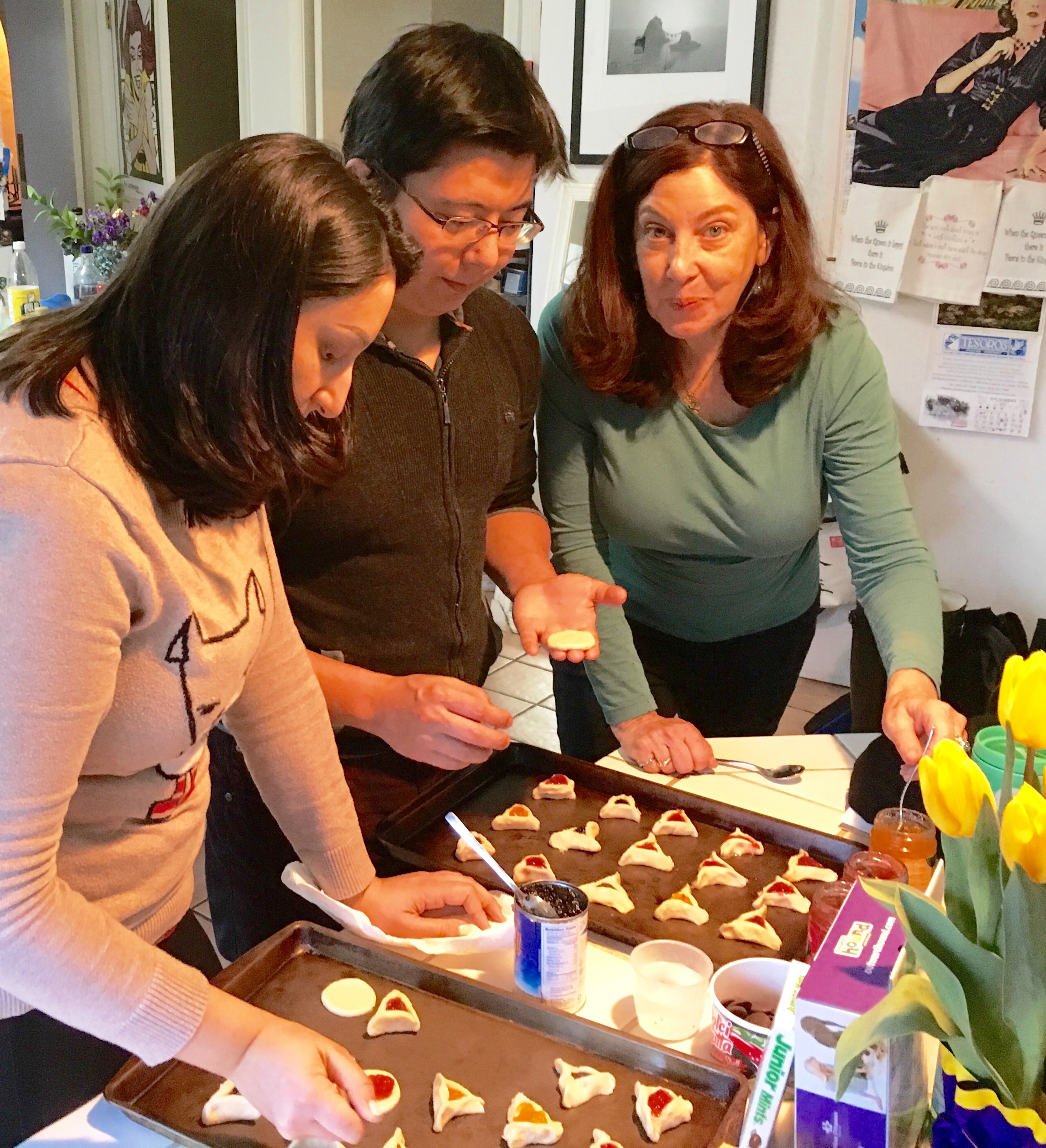 With Purim past at last, I’m free to turn my attention
to the next big thing in my life. No, not Pesach (although those Jewish holidays do just seem to keep on comin’). I’m talking about something even bigger
and (dare I say it?) better: my son’s wedding!  Yes, my once-little boy is tying the knot in late June. At his bar mitzvah, 16 years ago, he became a man; now he'll be a married man! And until
that time, looks like I will be a very busy woman. I spent nearly two entire days this week just arranging for a bus to transport our guests between the hotel and the wedding venue; because G-d
forbid anyone should drink a few chardonnays and a champagne toast and then drive. Not exactly fun, but I’m deliriously happy it’s done. 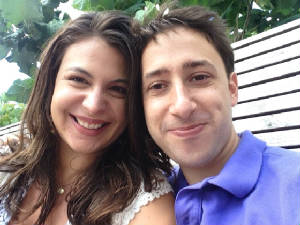 Ditto helping to compose the tiny insert for each invitation providing vital details in fine print, such as our group rate at the hotel and where
the happy couple is registered. (Macy’s
and Target, if you must know. Excessively generous friends have already sent nearly everything on their shockingly short list,
though. So don’t even bother to look.) But I’m not complaining. Far from! It’s nice to have something great to anticipate. Why, I’m already so excited, I can hardly focus on
anything else or fall asleep at night.  And with less
than three months to go, we are now getting down to the nitty-gritty. Which may be nitty, but is not all that gritty. Just this week, I got a luscious taste of the joy to come when I was invited to spend an afternoon at the florist with the bride
and my daughter, selecting
the bridal bouquet and other floral arrangements, not to mention the most
pivotal part of the ceremony (aside from the bride and groom themselves, that is). I am talking about the chuppah.  This will not be a traditional Jewish ceremony because (NEWS FLASH!) – just in case you were wondering – no, the bride is not Jewish. But to my delight she has opted to have the nuptials take place under a traditional Jewish wedding
canopy. They will also include other key elements central to our rituals. We will get to dance a raucous hora at the reception. Members of the bridal party will step forward to read blessings, maybe even seven of them  (otherwise known as the sheva barucha). And at the conclusion of the ceremony, the groom
will stomp ceremoniously on a glass. (Some people like to joke that this is the last time a
Jewish groom will ever get to put his foot down.)
And although there will be no rabbi present,
the happy couple has finally selected a wonderful officiant – a kind-hearted woman named Pat from the
Ethical Culture Society of New York, who seems eminently suited to preside over the proceedings, having done it many times before… and also appeared for several decades on As the World Turns. 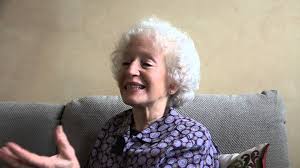 I have assured Kaitlin repeatedly that, despite her understandable trepidation, no bride or groom ever falls out of the chairs in which they are hoisted during the hora. But I
must admit that I approached our trip
to the florist with some trepidation myself.
One source of concern was whether there was anything we could do to make the large white wooden gazebo at the wedding venue look anything
like an actual chuppah.  The other was whether the bill she would ultimately present would break
the bank. Not that I genuinely cared if it broke or not. As the mother of the groom, I am ecstatic
to be involved in the preparations and want the bride and groom to have whatever
their hearts desire, within reason... and so far – given their frugal natures – everything they have desired has been well within reason. (Did I mention those succinct registry lists?) But there’s someone far more focused on staying within the bounds of the budget. And that someone would be my the father
of the groom, a.k.a. Nice Jewish Dad.  Talk about frugal natures! “Why do we need flowers?” he asked when
I first mentioned our floral appointment. “Because it’s a wedding,” I replied, assuming that would settle the issue.
But no. “Doesn’t
the wedding venue supply any flowers?”
he persisted, clearly mystified. Did I need to answer that truthfully,
or (like wedding guests who may harbor objections to a couple being joined in holy matrimony) might it be better to forever hold my peace? The fact was that the wedding package we’d chosen from
the venue did include a small arrangement for each table, as well as some flowers to adorn the gazebo during the ceremony. But what might this small arrangement consist of, and how could it possibly suffice for a big banquet table? Not to mention that we needed bouquets for the bride and her two attendants, along with boutonnieres for the groom, his groomsmen, and the fathers of both bride and groom… and corsages for the moms, of course. 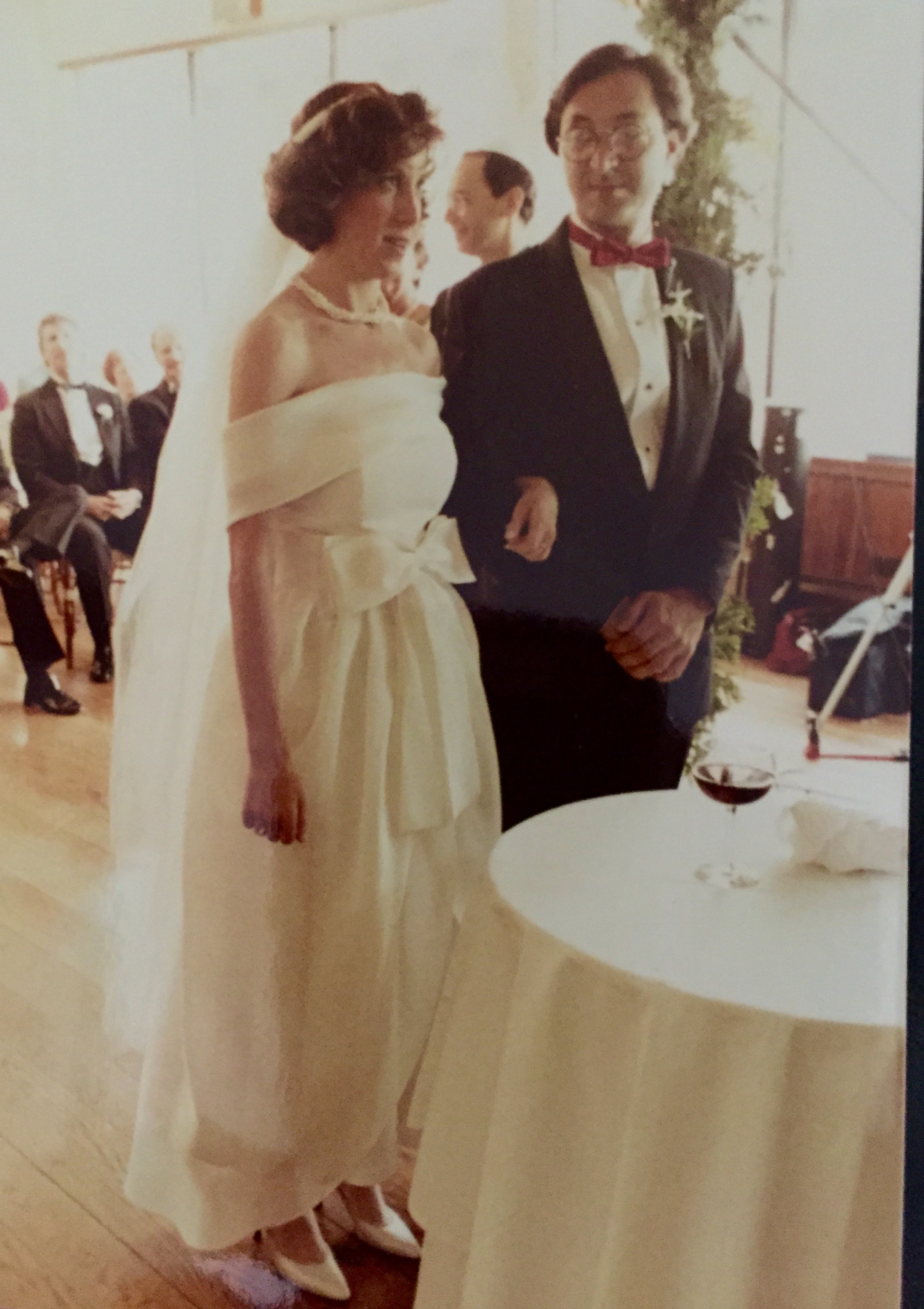 Yet this was breaking news to my husband, apparently, never mind that we’d been married ourselves with all
of the above once upon a time. And just to make sure this breaking news didn’t break our budget, or the bank, when we visited
the venue’s official florist, he was absolutely determined to come along
for the ride and offer his own input. And imagining that this would mean we’d end up settling for bunches of ugly, cheap carnations, or even worse if possible (do florists actually sell dandelions,
or weeds?), I was equally determined to head him off at the proverbial pass and leave him home.  I kept trying to explain to him that no man throughout the history of civilization has ever gotten
to choose the flowers for his son’s wedding, or any wedding, for that matter. No dice. What finally persuaded him to cease
and desist in the end was the discovery
that our son wasn’t coming, and that we womenfolk were going to spend at least two hours
choosing flowers. Plus my solemn promise to at least try to keep our budget somewhat in mind. 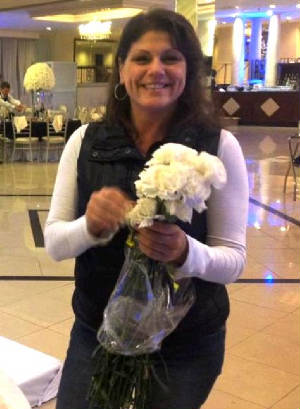 But I was soon almost sorry that he had stayed behind. Not because I needed him to rein in any of the other participants.
Quite the contrary. Kaitlin, the bride, remained true to her customary frugal nature. Also, flowers outside
of NYC turned out to be remarkably affordable. And Janet King, the proprietor
of Floral Designs by Janet in Eastchester, NY, turned out to be a poster child for the Less is More school of thought and floral design.  “I have a science for the size of the bouquets that I’ve come up with over the years,” she began, before going on to play a game of
“What is wrong with this picture?” One bride years ago had insisted upon
a massive bouquet comprised of six dozen roses. The result
was that it was almost too heavy to lift… and it was far bigger than her head. “Your
faced is perfectly proportioned to your body,” Janet went
on to observe. Any bouquet bigger than the bride’s head was just too big. And as we all know, nothing at a wedding should
upstage the bride, especially the bride's head. Not even the flowers.  As for what our perfectly sized bridal bouquet would consist of, Kaitlin hurried to show Janet photos of both her wedding gown and some of
the many lavender-hued bouquets she had recently posted on Pinterest (the popular web site on which people “pin” up pix of clothing, food, crafts, hobbies, and almost everything they happen to like).  “Oh, I love Pinterest!” Janet responded, proceeding to catalog the kinds of flowers that might be available in late June for her to closely replicate Kaitlin’s favorite example, including sweet pea, purple stock, and pale purple roses known
as “Ocean Song.”  Having read online that brides can spend anywhere from $200 to $20,000 on their bouquets – never mind that they conclude the evening
by tossing them over their heads – I braced myself before inquiring gently about the price. It was a shockingly low $125. As for the two maids-of-honor’s bouquets, tailored to match their own dresses? A mere $45 apiece. I tremble to even admit the
price of the boutonnieres for all of the gents involved. Suffice it to say that I had planned on $20 apiece for these items, typically a single
rose bud embellished with a sprig of baby’s breath. But Janet’s cost was just a fraction of that amount.  When we turned our attention to the centerpieces that
will grace the reception tables, Janet insisted that even if we wanted to beef up the small  arrangements already included
in our contract with the venue, simply adding a second small arrangement on each oblong table would
do. Especially because the girls had something else in mind. This
something else did not involve flowers at all, but bouquets of something edible that would look like flowers. I expected that
Janet would immediately scoff at the idea. Wouldn’t any businessperson?
After all, this would entail buying much less from her. But yet again I was in for a shock.
“I’ll tell you what I like,” she readily responded. “Anything
I haven’t seen before!”  And then she proceeded to explain in excruciating detail how Allegra and Kaitlin could achieve
their scheme, along with telling them where to buy each item required, including
Styrofoam balls, glue guns, and terra cotta pots they might
spray-paint. At last we came to the floral subject
closest to my own heart. The chuppah.  Once again, we showed Janet some of the potential wedding canopies we had pinned on Pinterest. She studied them with interest, but quickly explained that
there was a bit of a glitch to deal with. That white wooden gazebo at the venue couldn’t be moved. And if we placed another structure under it, or in front of it, it would just look ridiculous. However, Janet had been down this road many a time and knew just what to do.  By weaving branches of curly willow into the front poles and studding them with flowers, she would
be able to create something similar
to the rustic chuppah Kaitlin
desired. My friends had told me a chuppah might run at least $500. But forget that. Janet said
we were entitled to the flowers, and she’d throw
in the curly willow for free. The element that made it technically a chuppah, she went on to explain, was the piece of fabric she would
suspend inside the top of the gazebo, so that the bride and groom would stand together under a single piece of cloth. (I've read that
the chuppah represents
the bridal chamber, where the marriage was consummated in ancient times. Or
possibly Abraham and Sarah’s tent, which was open on all sides to indicate hospitality to all.) She would be happy to sell us a piece of ivory satin for this purpose for $75, she said, but the fabric would barely be visible. So why not use something we already had? 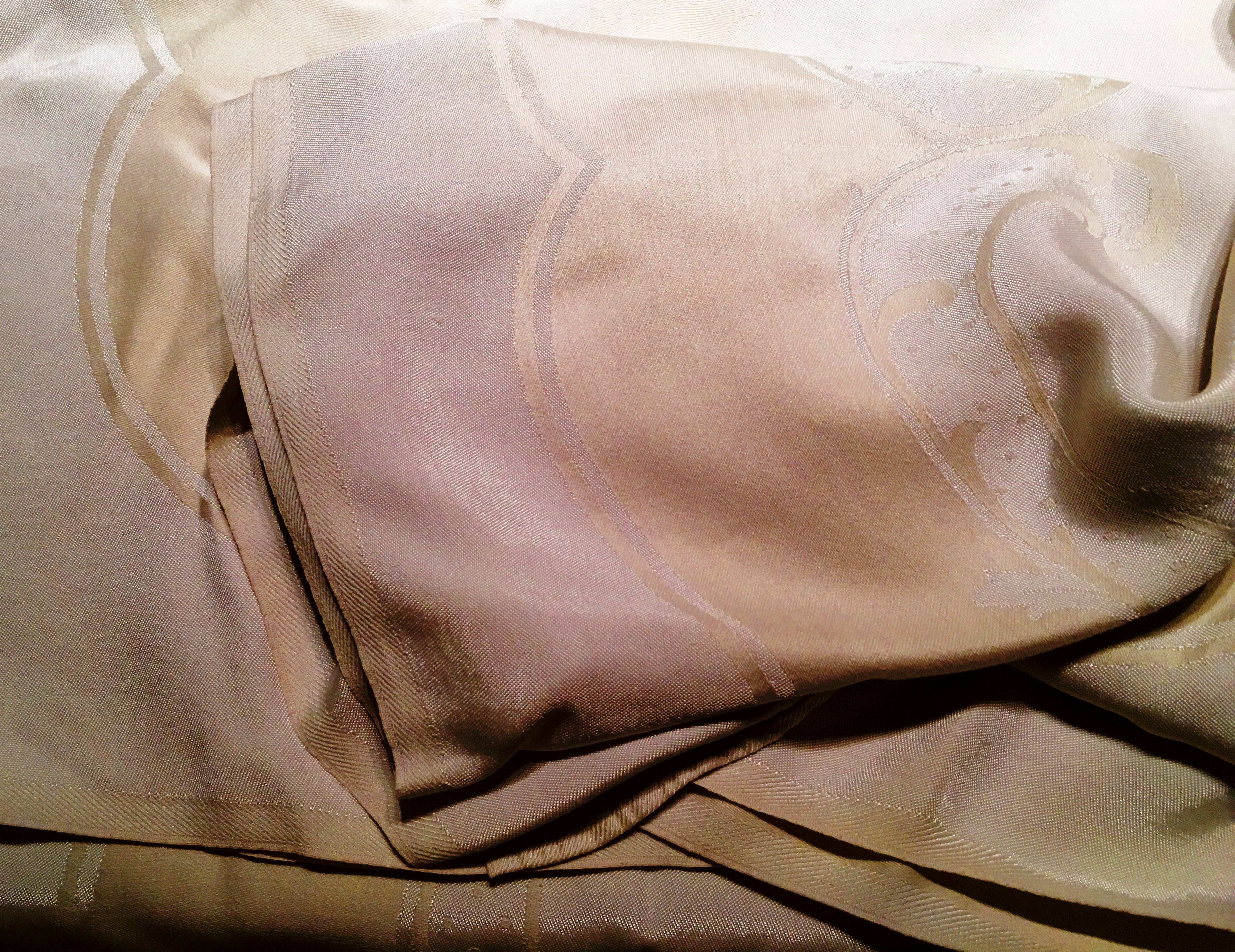 At this, I piped up to state that
I had several beautiful white or ivory tablecloths at home passed down from both my maternal grandmother and my mother-in-law. Any of these would probably be ideal, Janet assured me, because they would not only serve the purpose, but also include some added sentimental value to our family. “But you know what would really have sentimental value?” she continued. “If
you used the groom’s tallit.” And at these words, her eyes filled up with glistening tears. And so, within seconds, did mine.  I only wondered if I would be able to find Aidan’s tallit, the fringed prayer shawl he had first worn at his bar mitzvah. I assumed that
it was still somewhere in his room at home. (As Reform Jews, we don’t routinely wear them whenever we go to temple, and I doubted that he had brought it with him to college or NYC.) But I was ashamed to admit that I couldn’t remember
what it looked like, considering that we had purchased
it some 16 years ago.  Janet assured me that it would be suitable, whatever color or pattern it might be, and I promised to search for it as soon as I returned home. That brought us to the moment of truth. We were otherwise done. I held my breath as she totaled up the tab. And when she presented it, I nearly tumbled out
of my chair. So far, our first foray into the wedding business has given
us a severe case of sticker shock. Everything
-- and I do mean everything -- costs way more than you would ever expect or consider paying for anything. Knowing this, the
bride and I had budgeted a bundle for flowers. But Janet
said that everything we had ordered would cost under $1,000. Was she sure? Was she joking? Was there simply some mistake?
I carefully examined the printed pages of the contract she handed me to sign. And now I was
glad that my husband wasn’t present to hear the next words that came out of my mouth.
“We need more flowers!” I said. 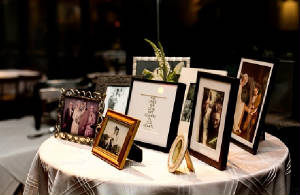 So Janet added a sizable arrangement
for the table on which the placecards will be set. Plus
another for the special “memory table,” on which we plan to place a photo of Kaitlin’s late mother, as well as the grandparents who, sadly, did not live to see this special day. And when I still wanted more , she asked
if we might like votive candles and petals on the tables to
be used during the cocktail hour. “What might that run?” I asked tentatively. 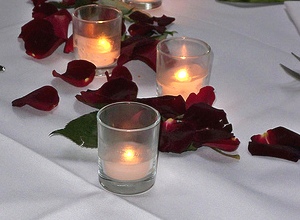 “Two-fifty,” she replied. “Two
hundred and fifty dollars?” I asked, a little surprised. No, she replied. “Two dollars and fifty cents per table."
("Where did you find this woman?" a friend would later ask. "Iowa?")
“Tell me, do you do flowers for other wedding venues?” I asked. Because we still have one more child to marry off someday. And next time, at this rate, I may insist that my husband come along, just for the pleasure of hearing words like that…
provided he swears that he will not try in any way to help choose any of the flowers. 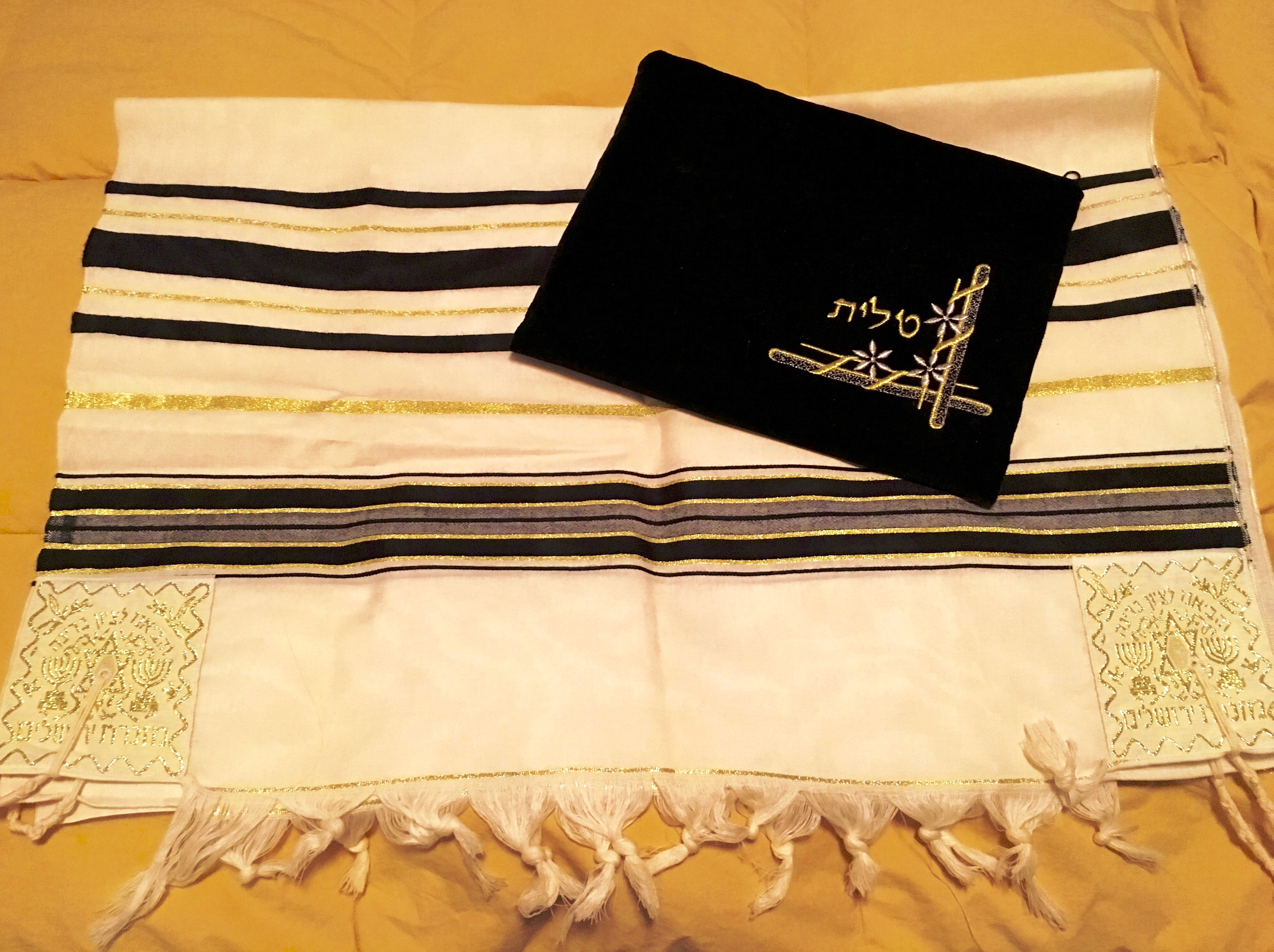 PS: I’m excited to report that I instantly found Aidan’s tallit on his dresser
at home, tucked safely into the embossed black velvet bag in which it came. It consists
of ivory cloth with black and gold stripes at either end, embroidered with golden Hebrew lettering.
Then again, I also found Grandma's exquisite cream-colored tablecloth with a subtle floral design.  Which should we use? I’ll let the happy couple decide. Either way, we're covered on the sentimental value front.
And thanks to Janet, her fabulous and affordable floral designs, and most of all her sechel (wisdom), whatever happens, I know that come late
June, love will truly be in bloom! Which should we use? I’ll let the happy couple decide. Either way, we're covered on the sentimental value front.
And thanks to Janet, her fabulous and affordable floral designs, and most of all her sechel (wisdom), whatever happens, I know that come late
June, love will truly be in bloom!
|